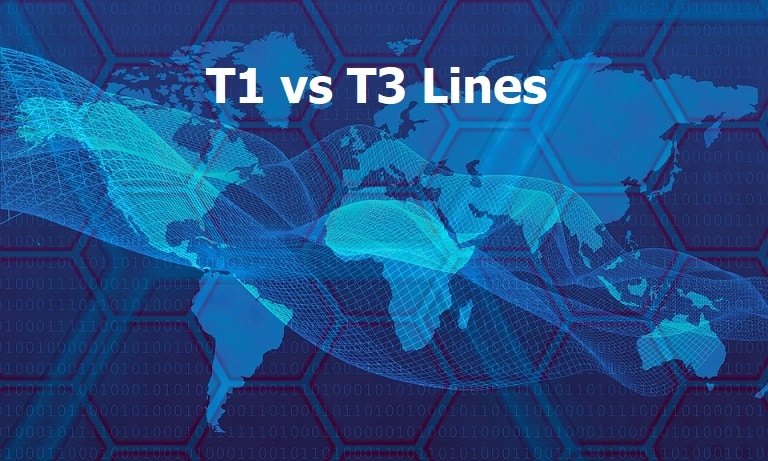
T1 and T3 connections are often confused when it comes down to choosing this type of connection for data and voice transmission. It is helpful to know the difference between a T1 and T3 connection and the types of services they perform so you can choose a connection that is appropriate for your home or business.
T1 Line
T1 lines are used for both home and commercial use and come in a variety of different types of connections to accommodate voice and data transmission. Although it is possible to achieve a T1 connection in your home, the most common preferred type of connection is a DSL or broadband connection. Therefore a T1 connection is generally used for larger business networks instead of home or small office settings.
A T1 line is comprised of a series of digital channels that allow transmission for voice and data at a speed that is much faster than a standard Internet connection. This type of connection is cheaper to install than a T3 line and the transmission of data and voice is not as fast as the T3 line. So a T1 line connection is in between a standard Internet connection and a T3 line connection in terms of transmission speed for data and voice and cost of installation.
T3 Line
A T3 line is also known as DS3 (Digital Signal 3) line and is capable of transmitting data at a much faster rate than a T1 line and carries a bandwidth that is equivalent to over 600 telephone lines. This type of connection is used for large corporate networks with a need for accommodating a massive amount of traffic. T3 lines are not designed for home use or small office networks.
A T3 line contains multiple T1 lines that are combined to create a super fast connection for transmitting data and voice. This makes it a perfect solution for large networks that may require additional bandwidth to accommodate future growth. By using a T3 connection it is possible to obtain bandwidth-on-demand which allows for a varied capacity depending upon the amount of traffic an organization needs to accommodate. Although the cost of installing a T3 line is significantly higher than a T1 line, for large networks the flexible bandwidth option makes it a cost-effective alternative to paying a fixed monthly payment.
Comparison Conclusion
As you can see a T1 line and a T3 line both provide faster connections for data and voice transmission however, the main difference between the two types of connections is speed and cost. A T1 line runs at a slower speed and is cheaper in cost to implement. A T3 line runs as a super fast speed but is costly to implement at a rate that can be as much as several thousand dollars more per month. Both types of connections also support real time applications and require a different set of protocols that define the connection.
For a medium sized organization that has a moderate amount of traffic on a network, a T1 line connection makes sense. For larger corporations and universities that require large traffic accommodations the T3 connection is the most popular due to its super high speed connectivity and data capacity.